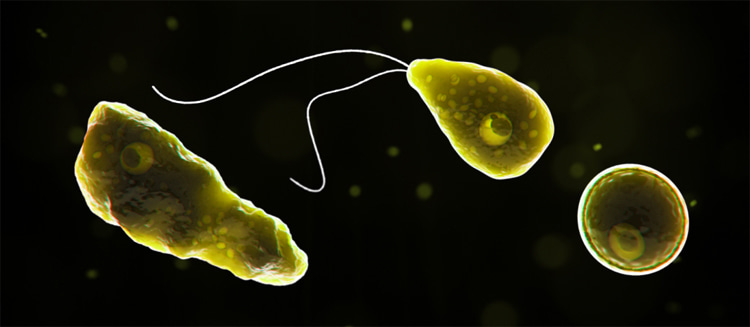The brain-eating amoeba is a single-celled living organism that can be found all around the world in untreated or inadequately chlorinated warm freshwater bodies.
It was first discovered in 1965 by Malcolm Fowler, an Australian pathologist at Adelaide Children's Hospital.
The brain-eating amoeba is scientifically known as Naegleria fowleri.
It develops and grows in warm water in temperatures as hot as 115 °F (45 °C) and will only survive for short periods at higher temperatures.
It can be found in slow-flowing rivers, mud puddles, lakes, hot springs, untreated swimming pools, and even soil.
This free-living microorganism enters the human body through the nose and then uses the brain as its main food source.

Vulnerable Groups
Surfers, swimmers, divers, and water sports participants are particularly exposed and vulnerable to this lethal bacteria-eating species.
Interestingly, you will never get infected from drinking water contaminated with Naegleria fowleri - you will only be infected when contaminated water goes up into your nostrils.
The good news is that it does not spread via aerosol droplets or water vapor, such as vapor from a humidifier or shower mist.
Naegleria fowleri is not found in saltwater.
And although the brain-eating amoeba does not transmit from an infected person to another person, it can quickly find its way to someone's brain and kill.
This thermophilic organism is attracted by the chemicals secreted by the nerve cells of the olfactory nerve before entering the brain's frontal lobe and destroying its tissue.
The condition is extremely rare and only affects less than ten people per year, mostly from July to September.

Common Symptoms and Treatment
The symptoms are identical to bacterial meningitis and only develop two to ten days after the amoeba enters the nose.
People who have been infected will start feeling headaches, nausea, seizures, confusion, hallucinations, stiff neck, getting fever, and vomiting.
After the initial symptoms, the disease will progress rapidly, causing death within about five days.
Unfortunately, there is still no treatment available for the brain-eating amoeba.
Scientists have created drugs that kill the deadly microorganisms in the laboratory, but they were only effective in a small percentage of patients.
So, how can people protect themselves against Naegleria fowleri?
Ideally, you should avoid water sports in freshwater bodies such as inadequately chlorinated swimming pools and wave pools, wake parks, and small lakes that you do not trust or have not been regularly tested.
Also, avoid submerging the head under water or engaging in water-related activities that cause water to go up the nose.
Infections are more likely to occur during the summer months (July to September in the Northern Hemisphere; December to March in the Southern Hemisphere).
Distilled water can be used to clean your nostrils.
Fatality Rate
According to the Center for Disease Control and Prevention (CDC), infections by brain-eating amoeba are rare and more common in southern US states.
However, the fatality rate is extremely high, and over 97 percent.
From 1962 to 2018, only four people out of 145 known infected individuals survived Naegleria fowleri.
More recently, between 2009 and 2018, 34 people have been infected.
Of all cases, 30 victims were infected by recreational water, three after performing nasal irrigation using contaminated tap water, and one by contaminated tap water used on a backyard slip 'n slide.
Unfortunately, there is no routine or rapid standardized test that can be done to identify the amoeba. It still takes weeks to confirm the infection.
